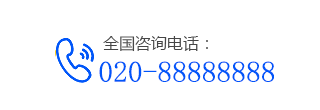

— News —
 Service Hotline +86-13816217984
Service Hotline +86-13816217984 Email:info@standard-groups.com
Landline:+86(21)-64208466
Telephone:+86-13816217984
Address:Unit 3A, 20/F,Far East Consortium Building,121 Des Voeux Road Central, Hong Kong
Technical News
time:2025-09-25 click:
The needle flame tester is a crucial piece of equipment in material and product safety testing. It's primarily used to assess a material's flame resistance and is widely used in safety testing for electrical products. The following provides a detailed introduction to its principles, structure, operating procedures, influencing factors, calibration methods, and relevant application cases.
A needle flame tester simulates the combustion effect of a small flame to evaluate the flammability and flame spread characteristics of a material under specific flame conditions. The basic principle is to use a needle-shaped burner of specified specifications to generate a small, stable flame. This flame is then applied to the test sample, and the sample's combustion behavior, such as ease of ignition, flame spread rate, and the presence of dripping, is observed to determine whether the material meets relevant safety standards and requirements.
The structure of a needle flame tester consists of several key components. First, the burner, typically composed of a needle-shaped component. For example, some devices use a spring motor formed around a 26-gauge hypodermic needle to drive a butane jet as the ignition medium. The burner must precisely control the shape, size, and temperature of the flame to ensure test accuracy and repeatability. For example, when stationary, it should produce a flame of a specific size (e.g., a 5/6-inch luminous flame). Second, the sample holder secures the sample under test and ensures its stable position during the test. It can typically accommodate sample holders of specific dimensions (e.g., 1.5 inches wide by 6 inches long) to accommodate testing of different sample types. Finally, the automatic timing device precisely controls the flame application time. When the ignition flame reaches its forward position relative to the specimen, a stopwatch begins, enabling fully automated timing. For example, a typical setting for the flame application time is 1 second, although different standards may have different requirements. Finally, there are ventilation and protective devices. The testing machine is usually equipped with a ventilation system to remove smoke and harmful gases produced by combustion, and also has protective devices to prevent flames and heat from causing harm to operators during the test.
1. Sample Preparation: Select appropriate samples according to relevant standards and test requirements and perform pre-treatment, such as cleaning and cutting to the specified size.
2. Equipment Calibration: Before each test, the needle flame tester must be calibrated to ensure that parameters such as the burner's flame size, temperature, and application time meet standard requirements. For example, flame size can be calibrated by measuring flame height and adjusting the needle valve and pressure gauge.
3. Sample Installation: Securely mount the prepared sample on the sample holder, ensuring that the sample's position and angle meet test specifications to prevent movement during the test.
4. Parameter Setting: Set parameters such as the flame application time and observation time according to the test standard and sample characteristics.
5. Test Start: Start the equipment, generate a flame from the burner, and apply it to the sample. Simultaneously, start the timing device. During the test, closely observe the sample's combustion behavior, such as ignition, flame spread, and the presence of dripping, and record the relevant data.
6. Test End: Stop the test after the set flame application time or observation time has expired. Turn off the burner, take out the sample, analyze and evaluate the test results to determine whether the sample meets the corresponding safety standards.
Needle flame tester test results are influenced by a variety of factors. First, flame parameters such as flame size, temperature, and shape significantly impact test results. For example, an overly large flame can make the sample more susceptible to ignition, while unstable flame temperature can skew test results. Therefore, precise control of flame parameters is crucial to ensuring test accuracy. Second, sample characteristics can also influence test results. Sample material, thickness, shape, and surface treatment all affect combustion performance. Different materials have different flammability characteristics. Thicker samples may be more difficult to ignite or have a slower flame spread than thinner ones. Surface coatings or treatments may also alter combustion behavior. Third, the test environment is also crucial. Ambient temperature, humidity, and ventilation conditions all influence test results. Higher ambient temperatures may make the sample more susceptible to ignition, while higher humidity may inhibit combustion. Ventilation can affect oxygen supply and the emission of combustion products, thereby affecting flame stability and the combustion process. Fourthly, operating specifications also play an important role. The operator's proficiency and standardization have a significant impact on the test results. For example, loose sample installation, inaccurate flame application position, inaccurate timing, etc. may lead to unreliable test results.
1. Flame Size Calibration: Use specialized measuring tools, such as a flame height gauge, to measure the burner's flame height, width, and other dimensions and compare them to standard requirements. Adjust components such as the needle valve and pressure gauge to bring the flame size within the specified range.
2. Temperature Calibration: Use temperature measuring equipment such as thermocouples to measure the flame temperature at a specific location to ensure it remains within the specified temperature range. If the temperature deviation is significant, check the burner's gas flow rate, combustion conditions, and other factors and make appropriate adjustments.
3. Time Calibration: Use high-precision timing equipment to calibrate the needle flame tester's automatic timing mechanism to ensure the accuracy of the flame application and observation times. Repeated measurements and comparisons can be used to verify the reliability of the timing mechanism.
Needle flame testers are widely used in various fields. In the electrical product sector, they are used to test the flame resistance of components such as casings and insulation materials during the production process. For example, the needle flame test can assess the fire safety of plastic casings of electronic products such as televisions and computers when exposed to small flames. This prevents small flames caused by internal short circuits and other faults from igniting the casing, thereby protecting the lives and property of users. In the building materials sector, needle flame testers are used to test the flammability of insulation materials and decorative panels during the research and development and quality control of building materials. For example, wood panels or insulation foam used in building interior decoration can be tested to determine whether they meet building fire protection regulations and prevent the spread of fire in the event of a fire. In the automotive parts sector, needle flame testing is also required for automotive interior materials, wires and cables, and other components, such as car seat fabrics and dashboard plastics. By testing their flame resistance, the safety of the vehicle can be improved in the event of a fire, giving passengers more time to escape.
In short, needle flame testers play an indispensable role in the safety assessment of materials and products. By gaining a deep understanding of its principles, structure, operating procedures, influencing factors, calibration methods, and application cases, we can better utilize the equipment to conduct accurate and reliable tests, ensuring that various products comply with relevant safety standards and protecting people’s lives and property.

Prev:A Deeper Look at UL94 and UL1581: A Comparison and Application of Flame Rating Standards
Next:Do you know Building material combustion calorific value calorimeter?
Related